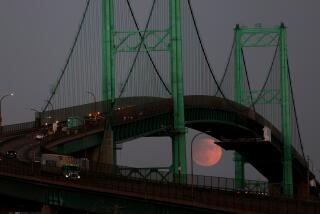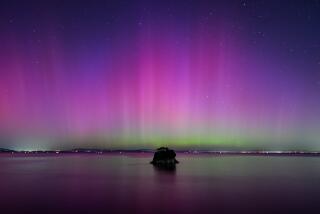Most of World Sees a Total Lunar Eclipse
- Share via
Sky-watchers in every continent but Australia reveled in the relative rarity of a total lunar eclipse Saturday night -- but as stargazers have noted for centuries, it was a matter of celestial perspective.
“From the moon, they’re having a solar eclipse,” said Dean Regas, an astronomer at the Cincinnati Observatory Center, which was founded in 1842 and claims to be the oldest in the U.S.
A lunar eclipse occurs when the moon, Earth and sun are in alignment and the moon passes through the planet’s shadow. In a solar eclipse, the Earth is in the moon’s shadow.
Total lunar eclipses can range in color -- from dark brown and red to bright orange, yellow and even gray -- depending on how much dust and clouds are in the Earth’s atmosphere. Saturday night’s eclipse appeared light red to many people and brownish to others.
Residents of the eastern United States could view the eclipse from beginning to end, about 6 to 10 p.m., but it was already underway when the moon rose around sunset in the West. And, in much of Southern California, there was cloud cover at the time of the eclipse.
Lunar eclipses are expected on May 4 and Oct. 28 next year, but the first will not be visible from North America.
More to Read
Sign up for Essential California
The most important California stories and recommendations in your inbox every morning.
You may occasionally receive promotional content from the Los Angeles Times.










